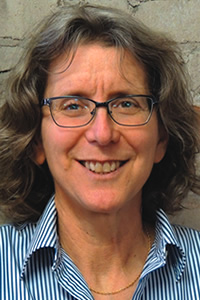
Nora Goldstein
BioCycle March/April 2017
An article in the New York Times Magazine on February 19, “The Compost King,” featured the story of solid waste entrepreneur, Charles Vigliotti of American Organic Energy. Vigliotti plans to build a $50 million anaerobic digestion plant to process food waste streams in Yaphank, New York at the same site as the company’s yard trimmings composting facility. The article, written by Elizabeth Royte, included the following statement: “The nation’s industrialized compost operations bring in roughly $3 billion annually.”
While Royte was doing research for this article, she reached out to BioCycle, among others, to inquire about the dollar value of the U.S. composting industry. In turn, we reached out to a handful of “industrialized” compost manufacturers, and the US Composting Council (USCC). Averages were generated on incoming tipping fees and outgoing product sales. After reading “The Compost King,” I emailed Royte to inquire about the source of the $3 billion statistic. The estimate was provided by the USCC, which used an average national tipping fee of $35/ton and an average price per cubic yard (cy) of finished compost of $12/cy.
Obviously, tipping fees for source separated organics vary by specific feedstock and geographic area. And the price per cubic yard of compost varies as well. Therefore it is very helpful to have averages, and the USCC’s estimates are a good starting point. This discussion about the value of the industry is timely, especially as the theme of BioCycle EAST COAST17 is Growing The Organics Recycling Industry. And several articles in this issue focus directly on this topic.
“What’s Your ‘Big MAC®’?” is a feature on compost marketing entrepreneur Rod Tyler, founder of Filtrexx International. Years ago, Tyler created “The Filtrexx Money Tree,” a calculator that illustrates the revenue opportunities in the half-inch to 2-inch minus fraction of screened compost. That fraction evolved into Filtrexx’s FilterMedia™, which is used in its erosion and sediment control Filtrexx Soxx, a silt fence replacement product. The value of compost in an 8-inch Filter Soxx “is worth $2/linear foot, and there are 60 linear feet in one cubic yard,” explains Tyler. The value of compost in this application is $120/cy, or 10 times the average estimate provided.
“Selling Your Sustainability Story” is a feature on digestate marketing entrepreneur Bob Joblin, cofounder of Magic Dirt Horticultural Products, LLC. Magic Dirt™, made from anaerobically digested dairy manure fibers, is sold in close to 1,500 Walmart stores in 20 states. The long fibers hold water and give Magic Dirt the porosity that emulates peat moss. And being a peat moss replacement is Magic Dirt’s “sustainability story” and what “makes Magic Dirt appealing to Walmart,” notes Joblin.
The third article in the BioCycle EAST COAST17 Conference Preview line-up is “Calculating Economic Impact Of Commercial Organics Ban”. A contractor for the Massachusetts Department of Environmental Protection conducted a quantitative and qualitative analysis of employment and revenue impacts after implementation of the state’s commercial organic waste ban. Its conclusion: implementation of the ban created more than 900 jobs and stimulated $175 million in economic activity across the Commonwealth during the first two years of the ban.
In short, running the numbers — which numerous presenters will be doing for attendees at BioCycle EAST COAST17 — will get us much closer to determining the value of our industry. For the foreseeable future, tipping fees will likely average $35/ton. Measuring the true growth of the organics recycling industry depends on valuing the economic, social and environmental benefits of the high value products coming out of organics processing operations.









